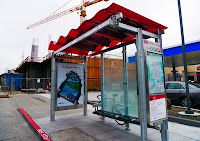
An affordable townhome community planned for Tampa is expected to be one of the first in the nation to achieve a top-tier rating for energy efficiency, reducing usage by more than 45 percent.
The 57-home Westshore Landings One, expected to be complete in 2010, is a joint effort between TECO Energy’s Tampa Electric and Peoples Gas in cooperation with the Westshore Community Development Corp., said a release from TECO.
The nonprofit Westshore Community Development in its release called the development an affordable community and said the new townhome prices will range from $96,000 to $127,000. The Wilson Co. is Westshore Community Development's joint venture partner, and financing was secured from USAmeriBank along with the city of Tampa, Hillsborough County and Florida Housing Finance Corp.
WCDC worked with SunTrust and Fannie Mae to ensure mortgages are available, Ron Rotella, president of WCDC, said in the release.
Per an agreement with the county, 43 of the units will be sold to buyers making less than 80 percent of area median income ($33,150 for a single person; $47,350 for a family of four). The remaining units will go to buyers making up to 120 percent of area median income ($49,680 for a single person; $71,040 for a family of four).
Westshore Landings One will be built on Spruce Street between Dale Mabry Highway and Lois Avenue. Palm Harbor Homes, a national builder of modular systems-built homes, will construct the homes at its facility in Plant City and deliver them to the site, the WDCA release said.
The project marks the first time energy-efficient electric and natural gas measures have been combined in this type of residential capacity, said the TECO release.
Each Westshore Landings One townhome will feature a solar water heater, energy-efficient natural gas appliances, a high-efficiency heating, ventilation and air conditioning system, and other energy-efficiency measures.
The Florida Solar Energy Center will monitor the amount of solar energy produced by each townhome’s solar water heater. Annual energy costs for a 1,500 square-foot home configured with the high-efficiency equipment are estimated to be about $663, versus about $991 for a home with less-efficient equipment.
Energy conservation also helps the environment since each 1,500-square-foot townhome produced about 39 percent less carbon dioxide than a less-efficient home. A standard home’s carbon profile can be reduced by up to 4,000 pounds per year through the installation of natural gas furnaces, clothes dryers, ranges and water heaters.
“The energy usage profile of Westshore Landings One underscores the commitment of Tampa Electric and Peoples Gas to energy efficiency and sustainability for our customers,” TECO Energy President and Chief Operating Officer John Ramil said in the release.
Tampa Electric first offered its customers energy-efficiency programs in the late 1970s, prior to any state or federal legislation requiring electric utilities to engage in conservation activities. Since then, it has achieved a recent performance level in the 96th percentile nationally.
TECO Energy (NYSE: TE) is an energy-related holding company. Its principal subsidiary Tampa Electric Co. is a regulated utility in Florida with both electric and gas divisions, Tampa Electric and Peoples Gas System. Other subsidiaries include TECO Coal, which owns and operates coal production facilities in Kentucky and Virginia, and TECO Guatemala, which is engaged in electric power generation and distribution and energy-related businesses in Guatemala.

 For a hundred years, simple solar batch heaters have been used in the United States. The term ICS (integrated collector storage) tells us that the collector and storage tank are combined into one unit. A tank of water, enclosed in an insulated box covered with glass, is placed in the sun facing south. Cold water is piped to the bottom of the tank; hot water is taken off the top. Whenever there´s a call for hot water, water pressure from the home moves hot water from the top of the solar batch heater as cold water is pushed into the bottom.
For a hundred years, simple solar batch heaters have been used in the United States. The term ICS (integrated collector storage) tells us that the collector and storage tank are combined into one unit. A tank of water, enclosed in an insulated box covered with glass, is placed in the sun facing south. Cold water is piped to the bottom of the tank; hot water is taken off the top. Whenever there´s a call for hot water, water pressure from the home moves hot water from the top of the solar batch heater as cold water is pushed into the bottom. 























